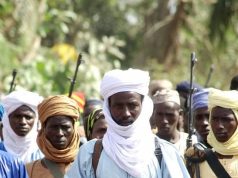In a landmark achievement for public health in Africa, the World Health Organization (WHO) has officially verified Niger as the first country on the continent to eliminate onchocerciasis, commonly known as river blindness. This milestone, announced in January 2025, positions Niger as the fifth country globally to interrupt transmission of the disease, following Colombia, Ecuador, Mexico, and Guatemala. 🦟 Understanding Onchocerciasis is a parasitic disease caused by the worm Onchocerca volvulus, transmitted to humans through the bites of infected blackflies that breed near fast-flowing rivers and streams. The disease is a leading cause of preventable blindness and causes severe skin conditions, disproportionately affecting rural and impoverished communities. 🇳🇪 Niger’s efforts to combat onchocerciasis began in 1976 under the WHO’s Onchocerciasis Control Programme in West Africa (OCP), focusing on aerial spraying of insecticides to control blackfly populations. In 1987, the introduction of ivermectin (Mectizan), donated by Merck & Co., marked a significant advancement, enabling mass drug administration (MDA) campaigns across endemic regions. Between 1976 and 1989, Niger implemented vector control measures that nearly eliminated onchocerciasis. Blackfly breeding sites were regularly treated with a rotation of larvicides to prevent resistance. Over the years, Niger’s Ministry of Health, in collaboration with international partners, conducted extensive epidemiological and entomological assessments to monitor progress. These efforts culminated in the cessation of MDA in all endemic areas, followed by a three-year post-treatment surveillance period, after which WHO confirmed the interruption of transmission. 🌍 Global and Regional Significance, Niger’s success underscores the feasibility of eliminating onchocerciasis in Africa and serves as an inspiration for other endemic countries. It also highlights the effectiveness of sustained political commitment, community engagement, and international collaboration in combating neglected tropical diseases (NTDs). This achievement aligns with the goals outlined in the WHO’s NTD Roadmap 2021–2030, which aims to eliminate at least one NTD in 100 countries by 2030. 🔍 Verification Process The WHO’s verification of onchocerciasis elimination involves a rigorous process, including: Cessation of MDA: Demonstrating that MDA is no longer required in all endemic areas. Surveillance: Implementing a minimum three-year post-treatment surveillance period to ensure no new infections occur. Entomological and Epidemiological Assessments: Conducting studies to confirm the absence of the parasite in both human populations and blackfly vectors. Niger met all these criteria, leading to its official recognition by WHO. 🗣️ Statements from WHO Leadership Dr. Tedros Adhanom Ghebreyesus, WHO Director-General, lauded Niger’s accomplishment: > “Eliminating a disease is a significant achievement that requires tireless dedication. I congratulate Niger for its commitment to liberating its population from this blinding, stigmatizing illness that causes so much human suffering among the poorest.” 📚
Sources WHO News Release: WHO verifies Niger as the first country in the African Region to eliminate onchocerciasis WHO Feature Story: A historic milestone! WHO verifies Niger free of onchocerciasis as the first country on the African Continent WHO ESPEN Update: Niger becomes first African country to eliminate onchocerciasis as a public health Problems elimination of onchocerciasis marks a significant victory in the global fight against neglected tropical diseases and sets a precedent for other countries striving to achieve similar milestones.





